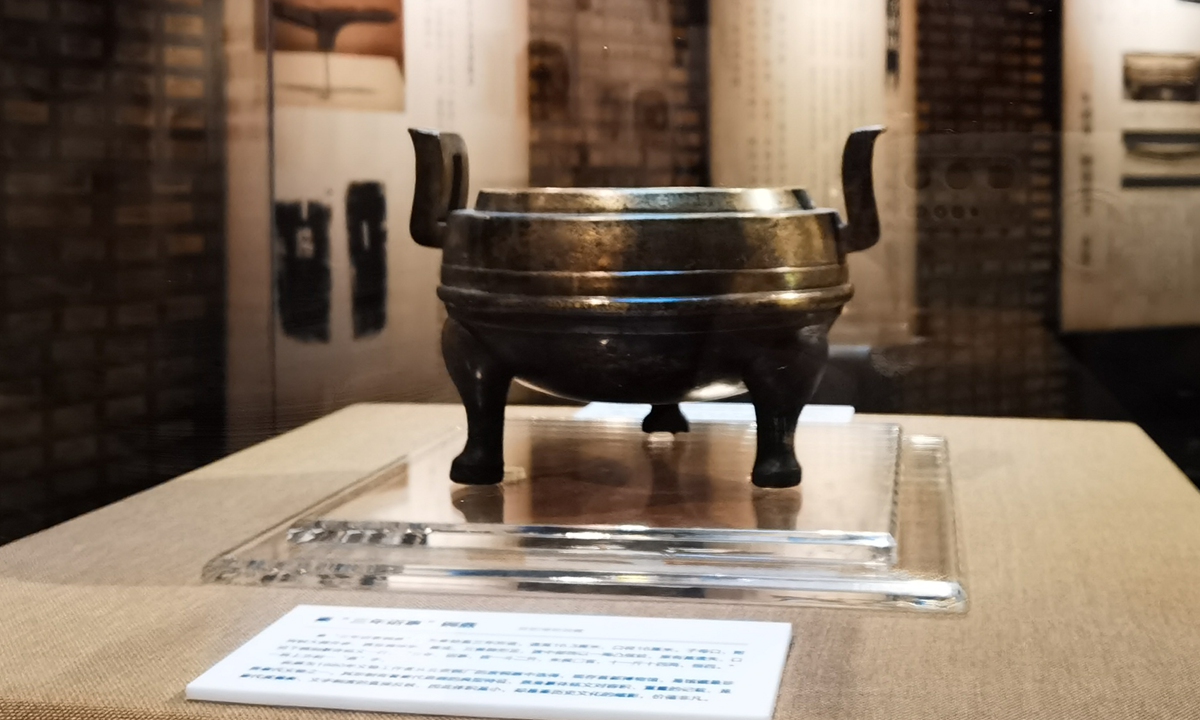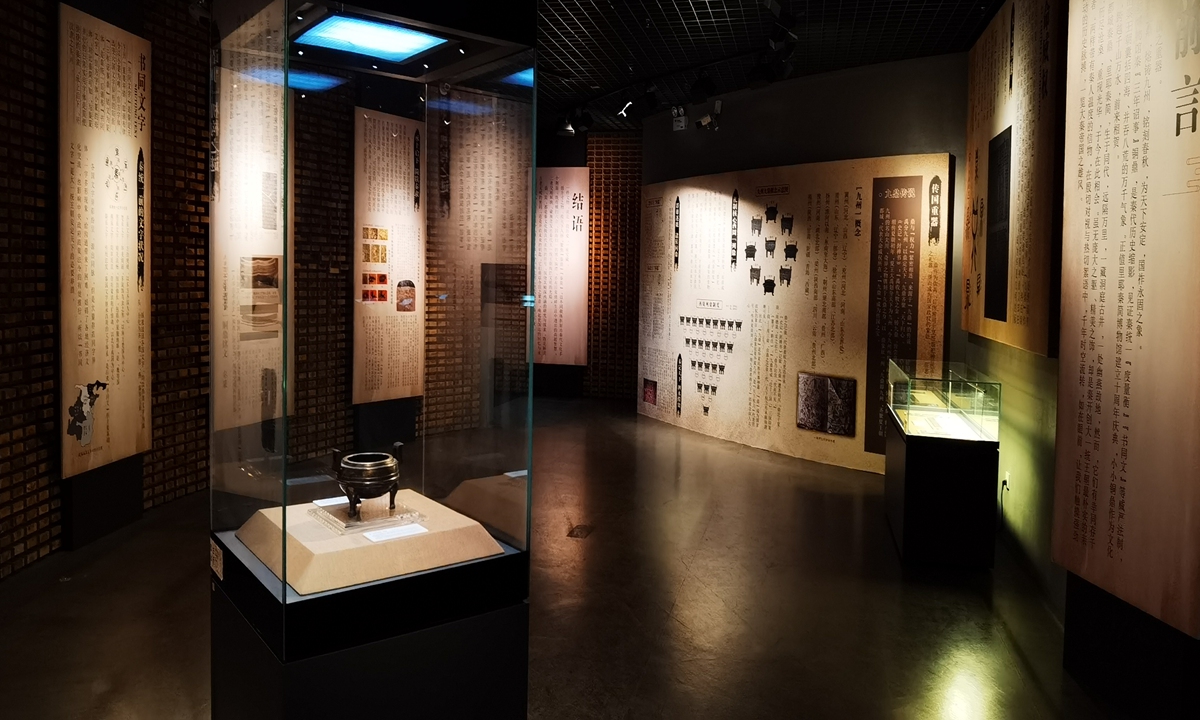Cultural exhibition launched to explore Qin Dynasty historical relics
Source: Global Times Published: 2020/11/8 18:28:40

The bronze ding from the Qin Dynasty collected by the Capital Museum in Beijing. Photo: Courtesy to the Museum
An exhibition focusing on exploring the culture and history of Chinese ding and Chinese bamboo and wooden slips from the Qin Dynasty (221BC-206BC) kicked off on Saturday at the Liye Qin Slips Museum in Longshan county, Xiangxi Tujia and Miao Autonomous Prefecture, Central China's Hunan Province.
Jointly organized by the Capital Museum in Beijing and the Liye Qin Slips Museum, the exhibition aims to choreograph a cultural dialogue between Chinese ding, a unique type of ancient Chinese cauldron, with Chinese bamboo and wooden slips, or jian du in Chinese, which were used as a substitute for paper in ancient China.
The exhibition contains various sections that explore the representations of fate and authority, changing regulations, and the measurement and customization of Chinese ding in order to explain the multiple cultural connotations of the object, which is considered a sacred symbol of Chinese culture.

The venue of the Qin Dynasty historical relics exhibition at the Liye Qin Slips Museum. Photo: Courtesy to the Museum
The highlighted item at the exhibition is a bronze ding from the Qin Dynasty that was discovered by cultural relic workers among waste copperwares in Beijing 40 years ago. Though size-wise the ding is not too prominent, with a full height of 16.3 centimeters and a diameter of 16 centimeters, it is still one of the most precious cultural relics of the Qin Dynasty collected by the Capital Museum.
Other highlights include three Chinese bamboo and wooden slips brought by the Liye Qin Slips Museum which show administration records written during the Qin Dynasty about issues such as household taxes, archiving and management of clothing.
The exhibited items reveal information about everyday life as well as the legal system of the Qin Dynasty.
The Capital Museum has also inaugurated an exhibition branch in the Liye Qin Slips Museum to further their partnership as well as to promote the development of museum undertakings and cultural relic reservation in the region.
Posted in: ART,CULTURE & LEISURE